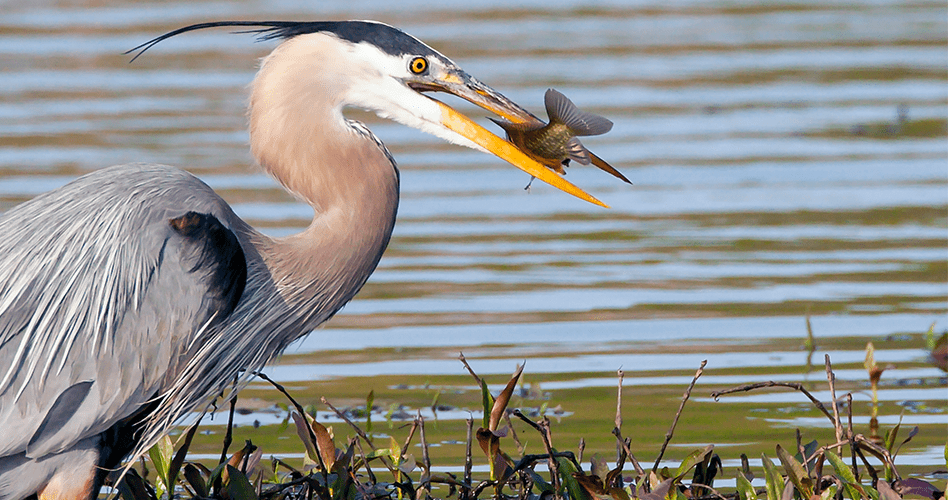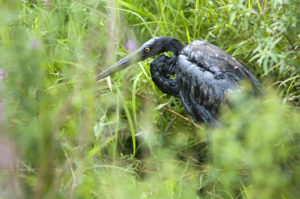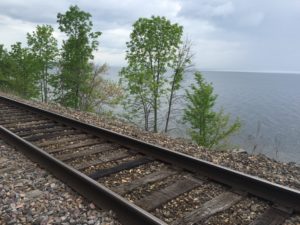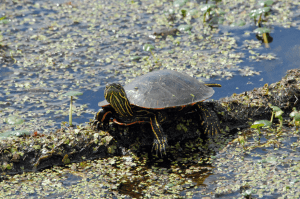We have much more to do and your continued support is needed now more than ever.
Ongoing Battle Six Years After Kalamazoo River Oil Spill
This Week in NWF History

Since 1936, the National Wildlife Federation has worked to conserve the nation’s wildlife and wild places. As part of our 80th anniversary celebration, we are recognizing important moments in our history that continue to make an impact today.
On a hot summer day, the Kalamazoo River’s cool waters are a hub for social outdoor activities: hiking, bird watching, paddling or fishing. The river’s natural beauty draws people in from miles around.

Now imagine that suddenly, without warning, you wake up to this same river full of thick oil and toxic fumes burning your every breath. Birds are covered top-to-bottom with crude oil, hundreds of people are asked to leave their homes, and sections of the river become off-limits for more than four years while crews of people attempt to clean the devastation.
Just six years ago, on July 26, 2010, this was the reality for many people along a 40-mile stretch of the Kalamazoo River in Michigan after an Enbridge pipeline burst, spilling over 840,000 gallons of tar sands crude oil.
The sixth anniversary of this spill gives us cause to remember the extreme costs and destruction of oil spills. So far, more than $1.2 billion has been spent to clean up the Kalamazoo River, yet tar sands oil will remain in the river for decades to come. During the 2010 spill, large amounts of tar sands crude – which is heavier than regular oil and very destructive to clean up – sank to the bottom of the river and is still in the river system.
Stopping the Next Oil Spills
Sadly, unless we act to remove the risks, the next disastrous oil spill is just waiting to happen along some of our other precious waterways. In the Northeast, for instance, Global Partners is attempting to modify their Albany, New York port so they can accept tar sands crude that would be transported by rail along Lake Champlain and the Hudson River. This would bring tar sands oil and explosive Bakken crude, which is already rolling on aging train lines along the lake, through dozens of vulnerable communities.

The National Wildlife Federation and partners are fighting for the waterways, people, fish, and wildlife that support a multi-billion-dollar economy in New York by working to ensure that the New York Department of Environmental Conservation does not approve a permit to Global Partners for their port modification.
Meanwhile, under the treasured Straits of Mackinac, Enbridge is still transporting oil along a 63 year-old pipeline that traverses the bottom of the Great Lakes. With swift currents and deep freshwater, the Straits has been described as the worse possible place for an oil pipeline. In fact, the Michigan Attorney General has stated that oil pipeline transport there would not be approved if it was proposed today. If you live in Michigan, take action to shut down line 5.

Thankfully, oil consumption in the U.S. is dropping through efficiency measures and the adoption of alternative energy sources. Therefore, our need to extract and transport dangerous and polluting tar sands and Bakken crude is declining as our demand continues to decrease, giving us the opportunity to remove dangerous pipelines and rail lines across the country to protect our fish, wildlife, rivers, lakes, and communities.
It is time to stop moving oil through some of our most vulnerable places, where the infrastructure is old and the local economies could not withstand a disaster. The anniversary of the Kalamazoo spill reminds us that we have more work to do to make oil transport everywhere safer for wildlife and for people.
Take ActionProtect wildlife and stop more tar sands oil from being pumped through important habitat






















